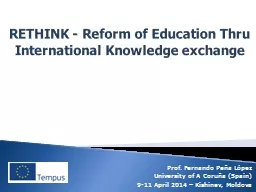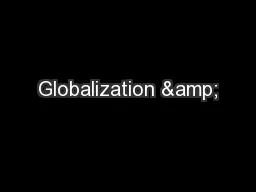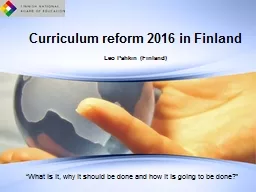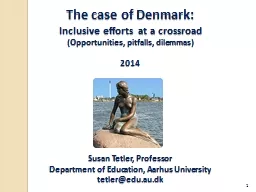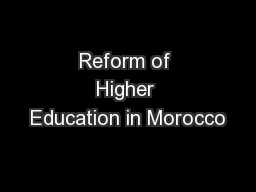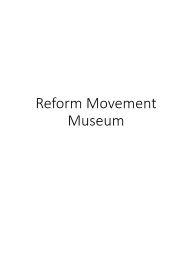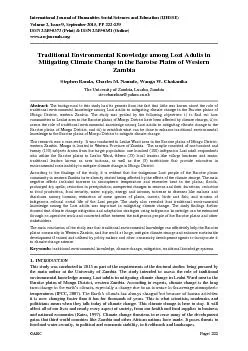PPT-RETHINK - Reform of Education Thru International Knowledge
Author : pamella-moone | Published Date : 2017-06-09
Prof Fernando Peña López University of A Coruña Spain 911 April 2014 Kishinev Moldova What is quality The word quality has not a peculiar meaning within the
Presentation Embed Code
Download Presentation
Download Presentation The PPT/PDF document "RETHINK - Reform of Education Thru Inter..." is the property of its rightful owner. Permission is granted to download and print the materials on this website for personal, non-commercial use only, and to display it on your personal computer provided you do not modify the materials and that you retain all copyright notices contained in the materials. By downloading content from our website, you accept the terms of this agreement.
RETHINK - Reform of Education Thru International Knowledge: Transcript
Download Rules Of Document
"RETHINK - Reform of Education Thru International Knowledge"The content belongs to its owner. You may download and print it for personal use, without modification, and keep all copyright notices. By downloading, you agree to these terms.
Related Documents

